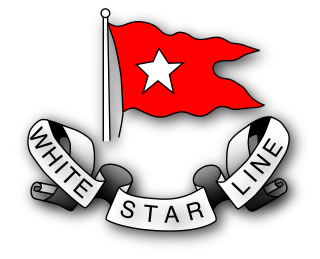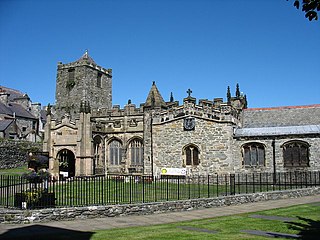
SS Ionic was a steam-powered ocean liner built in 1902 by Harland and Wolff in Belfast for the White Star Line. She was the second White Star Liner to be named Ionic and served on the United Kingdom – New Zealand route. Her sister ships were SS Athenic and SS Corinthic.
Empire Celtic was a ferry which was built in 1945 as Landing Ship, Tank LST 3512 for the Royal Navy. In 1946 she was chartered by the Atlantic Steam Navigation Company Ltd, converted to a ferry and renamed Empire Celtic. In 1956, she was requisitioned by the Royal Navy for a few months during the Suez Crisis as HMS Empire Cedric. She served until 1960 and was scrapped in 1965.
Empire Chapman was an 8,194 GRT tanker which was built in 1942 by Harland & Wolff, Belfast for the Ministry of War Transport (MoWT). In 1946 she was sold into merchant service and renamed British Commando. She was scrapped in 1959.
The Duke of Argyll was a railway steamer passenger ship that operated in Europe from 1956 to 1975.
The Duke of York was a steamer passenger ship initially operated by the London Midland and Scottish Railway which saw service from 1935 to 1964. She was renamed HMS Duke of Wellington for the duration of World War II.
TSS Slievemore was a twin screw steamer passenger and cargo vessel operated by the London and North Western Railway from 1904 to 1923, and the London, Midland and Scottish Railway from 1923 to 1932.
TSS Slieve Bawn was a twin screw steamer passenger and cargo vessel operated by the London and North Western Railway from 1904 to 1923, and the London, Midland and Scottish Railway from 1923 to 1935.
TSS Irene was a steam turbine cargo vessel operated by the London and North Western Railway from 1885 to 1906.
TSS Olga was a steam turbine cargo vessel operated by the London and North Western Railway from 1887 to 1908.

SS Athenic was a British passenger liner built by Harland & Wolff shipyards for the White Star Line in 1901. In 1928, she came to a Norwegian company and was renamed SS Pelagos. Torpedoed in 1944, she was refloated the following year and continued to serve until her demolition in 1962.
SS Pontic was a tender and baggage vessel of the White Star Line that was built in 1894 by Harland & Wolff Ltd, Belfast, United Kingdom. She was sold in 1919 and continued in that role. In 1925, she was sold and used as a collier. She was scrapped in 1930.
SS Belgic was a steamship of the White Star Line. She was launched on 14 January 1873 as hull number 81 at Harland and Wolff Shipyards, Belfast, and delivered to the owners on 29 March 1873. She was one of two cargo ships initially built by Harland and Wolff for the Bibby Line, but bought on the stocks for use on the South American service, the other ship being Belgic's sister, SS Gaelic.
SS Nomadic was a steamship of the White Star Line. She was laid down in 1891, in yard 236 at Harland and Wolff Shipyards, Belfast, as a livestock carrier and completed on 14 April 1891.
SS Cufic was a livestock carrier, built by Harland and Wolff for the White Star Line, displacing 4,639 tons and completed on 1 December 1888. Her sister ship was the SS Runic. She ran the Liverpool to New York route. In 1896, Cufic was chartered to a Spanish shipping company and renamed Nuestra Señora de Guadalupe. She played a role in the Cuban Revolution, transporting horses between Spain and Cuba.

SS Gaelic was a steamship of the White Star Line, built by shipbuilders Harland and Wolff of Belfast.
SS Ionic was a cargo liner initially in service with White Star Line from 1883 until 1900. She was used on the company's joint route to New Zealand with the Shaw, Savill & Albion Line. She was sold to the Aberdeen Line in 1900 and renamed SS Sophocles, and was withdrawn for service in 1906 and scrapped in 1908.

SS Pericles was a 10,925-ton ocean liner of the Aberdeen Line launched in 1907. In 1910, she hit a rock near Cape Leeuwin, Western Australia and sank, although with no loss of life.

SS Arabic was a steamship of the White Star Line and its first steel-hulled vessel. Like her predecessors, she was built by shipbuilders Harland and Wolff of Belfast.

The SS Cevic was a steam ship built by Harland and Wolff for the White Star Line for service initially in the North Atlantic. Later she was transferred to the Australia run. On the outbreak of the First World War she was sold to the Admiralty and converted to a dummy capital ship. Later she was transferred to the Royal Fleet Auxiliary. After the war she was sold to the Anglo-Saxon Petroleum Company.








